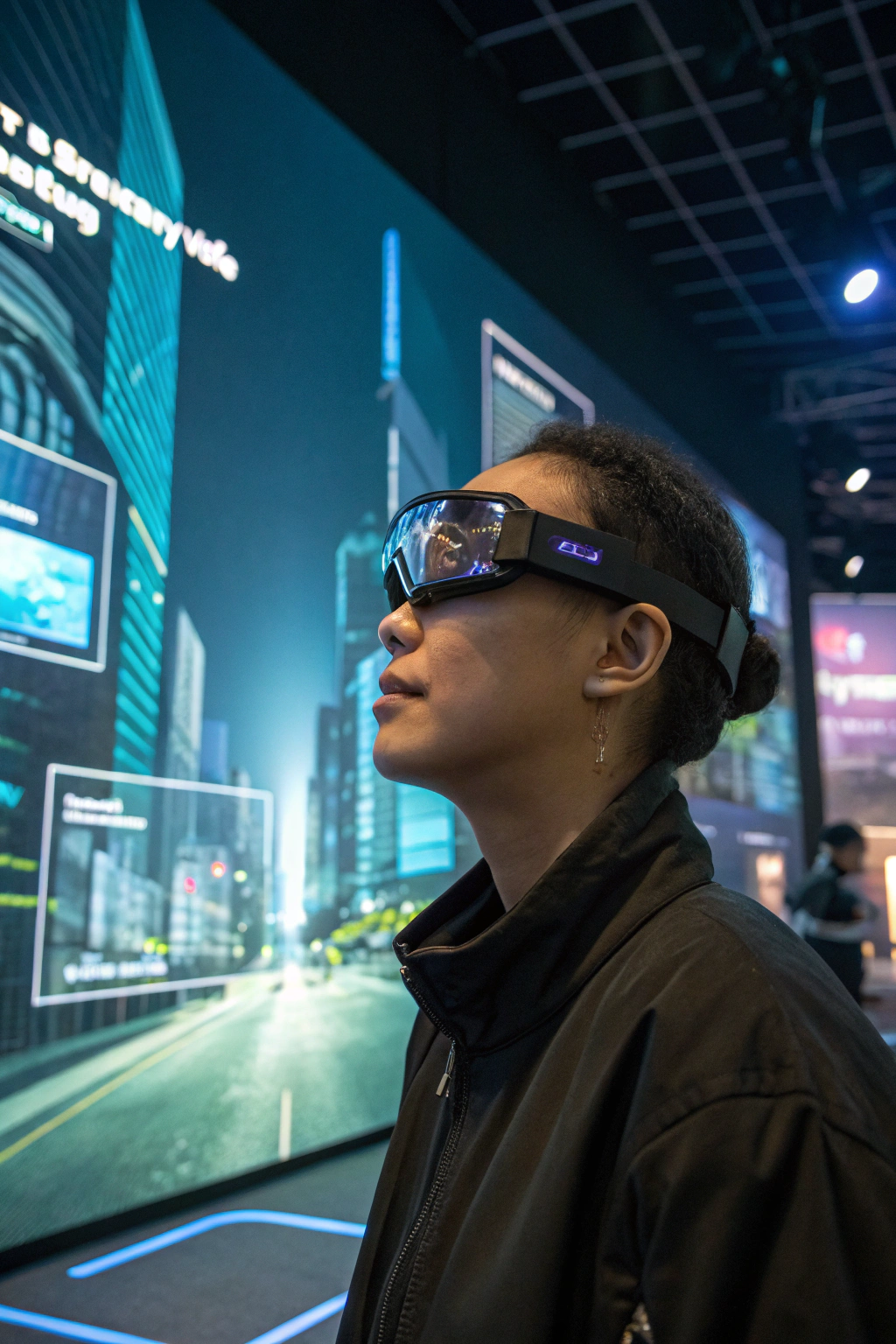The Next Digital Frontier: How 26.1 is Redefining Our Reality
The conversation around the metaverse has often felt abstract, a distant promise of virtual worlds. But what if the next evolution of the internet isn’t about escaping reality, but enhancing it? A groundbreaking new protocol is making this possible, and it’s called 26.1. This AI-driven spatial computing framework acts as the connective tissue between our physical world and a persistent, intelligent digital layer. It’s the engine designed to power the next generation of augmented reality, moving beyond simple filters and games to create a truly interactive and context-aware experience, fundamentally changing how we work, play, and connect.
Background and Evolution of the 26.1 Protocol
The journey toward a truly augmented reality has been a long one, marked by ambitious projects and valuable lessons. Early pioneers like Google Glass introduced the concept of head-mounted displays to the public, but were hampered by social, technical, and practical limitations. Subsequent VR platforms demonstrated the power of immersion but kept users tethered to fully virtual spaces, disconnected from their immediate surroundings. The industry quickly realized that for AR to achieve mass adoption, it needed a common language—a standardized way for devices to understand and interact with physical space and digital information simultaneously. This need gave rise to the development of 26.1, an open-source initiative conceived by a consortium of leading tech firms and academic institutions to create a unified framework. As detailed in explorations of our digital future, building a better, integrated reality is now the primary goal, moving away from purely escapist digital worlds. The core principle of 26.1 is to map, index, and contextualize the real world, allowing AI to deliver relevant information seamlessly and persistently through devices like smart glasses.
Practical Applications of 26.1 in the Real World
Hyper-Contextual Navigation and Information
Imagine walking through a city and seeing more than just streets and buildings. With glasses powered by the 26.1 protocol, your view is enriched with a dynamic layer of useful data. Turn-by-turn walking directions are no longer on your phone screen but appear as glowing arrows on the pavement ahead. Point your gaze at a historic monument, and a discreet text box appears with key facts and figures. Look at a restaurant, and you can see its menu, user ratings, and reservation availability in real-time. This isn’t just about displaying information; it’s about delivering the right data at the precise moment it becomes relevant, all managed by the intelligent 26.1 framework.
Collaborative and Immersive Remote Work
The future of work is hybrid, and 26.1 is set to dissolve the remaining barriers of remote collaboration. An architectural team, spread across different continents, can convene in a shared augmented space to review a 3D building model. Each participant can walk around the holographic structure, make annotations that are visible to everyone, and manipulate design elements with simple hand gestures. A senior engineer could remotely guide a junior technician through a complex repair by overlaying instructions and schematics directly onto the machinery the technician is viewing. This level of shared presence and interaction makes remote work more effective and engaging than ever before.
Revolutionizing Retail and E-Commerce
The gap between online shopping and in-person retail is closing, thanks to applications built on 26.1. In a physical store, you could look at an empty shelf and see a virtual representation of the out-of-stock product, with options to order it for home delivery. At home, you can use your smart glasses to place a full-scale virtual model of a new sofa in your living room, walking around it to see how it fits the space and complements your decor. This « try before you buy » capability, powered by the spatial awareness of the 26.1 protocol, significantly reduces purchasing friction and enhances consumer confidence.
Challenges and Ethical Considerations
As with any transformative technology, the rise of 26.1 brings a host of critical challenges. The most pressing is privacy. A system that constantly sees and interprets your environment collects an unprecedented amount of personal data. Who owns this data, how is it secured, and how do we prevent its misuse for surveillance or manipulation? Furthermore, the potential for AI-driven misinformation is immense. Malicious actors could create deceptive digital overlays, from fake advertisements to political propaganda, altering a user’s perception of reality. We must also address the risk of AI bias, where the system might misinterpret or unfairly categorize people and places based on flawed training data. Finally, the « digital divide » could widen, creating a world where those with access to 26.1 technology have a significant advantage over those who do not, demanding a focus on equitable access and digital literacy.
What’s Next for 26.1?
The roadmap for 26.1 is unfolding rapidly. In the short term (1-2 years), we expect to see wider availability of developer kits and the launch of first-generation consumer smart glasses specifically designed for the protocol from major tech players. In the mid-term (3-5 years), the focus will be on establishing interoperability, allowing applications and experiences to work across different hardware platforms. We will likely see a « killer app » emerge that drives mainstream adoption. Long-term (5+ years), the 26.1 framework could integrate with other sensory technologies, creating a more holistic augmented reality that blends sight, sound, and perhaps even touch, truly erasing the line between the physical and digital worlds.
How to Get Involved
Getting started with this technology is more accessible than you might think. Aspiring developers and creators can explore open-source Software Development Kits (SDKs) that are beginning to support the core principles of 26.1. Joining online communities on platforms like GitHub, Reddit (r/spatialcomputing), and Discord is an excellent way to connect with pioneers in the field and stay informed. For curated guides and deep dives into the tools shaping our future, check out our hub for more resources on emerging technologies.
Debunking Common Myths
As excitement builds, so does misinformation. Let’s clarify a few things. First, many believe 26.1 will make smartphones obsolete overnight. This is unlikely; the transition will be gradual, with both technologies coexisting and complementing each other for years. Second is the myth that this is just for gaming. While entertainment will be a key sector, the primary value of 26.1 lies in its utility for productivity, education, and daily assistance. Finally, some fear it will be a closed ecosystem controlled by one corporation. In reality, 26.1 is being championed as an open standard, precisely to foster competition and prevent a single entity from owning our digital reality.
Top Tools & Resources for 26.1
- Lumenta SDK: An open-source developer kit that provides the foundational tools for building 26.1-compliant spatial applications, including environment mapping and object recognition.
- Overlay Simulator: A browser-based platform that allows designers and developers to test AR user interfaces and experiences on a virtual 3D canvas without needing physical hardware.
- The Spatial Web Newsletter: A weekly digest curating the latest advancements, research papers, and startup funding news in the world of spatial computing and 26.1.

Conclusion
The emergence of 26.1 marks a pivotal moment in our relationship with technology. It’s the critical infrastructure for a future where digital information is no longer confined to screens but is woven into the fabric of our physical world. By providing a common, intelligent language for augmented reality, this protocol is unlocking possibilities that were once the realm of science fiction. The path forward requires careful navigation of ethical challenges, but the potential to create a more helpful, connected, and informed world is undeniable. The next layer of reality is being built, one line of code at a time. 🔗 Discover more futuristic insights on our Pinterest!
FAQ
What is 26.1 and why is it important?
26.1 is an AI-powered spatial computing protocol that acts as a standard for integrating digital information and experiences with the physical world. It’s important because it enables different devices and applications to share and understand a persistent, interactive augmented reality layer, paving the way for the mainstream adoption of AR.
How can I start using 26.1 today?
While consumer devices fully optimized for 26.1 are still emerging, you can start by engaging with the ecosystem. Developers can download early SDKs and use simulators to build and test applications. Enthusiasts can join online communities to follow its development and be among the first to know about hardware releases.
Where can I learn more?
Beyond our site, credible sources include major tech publications like Wired’s AR section, academic papers on arXiv, and developer communities on GitHub. Following the key companies and consortia involved in spatial computing will also provide the latest updates.
